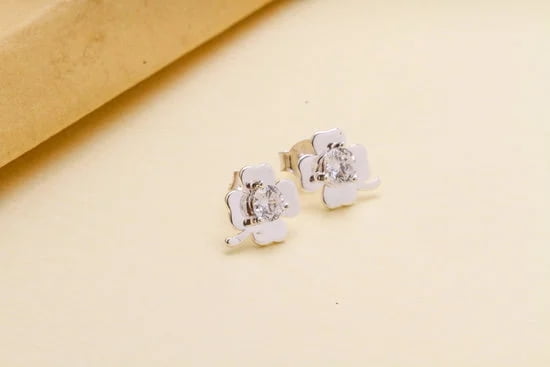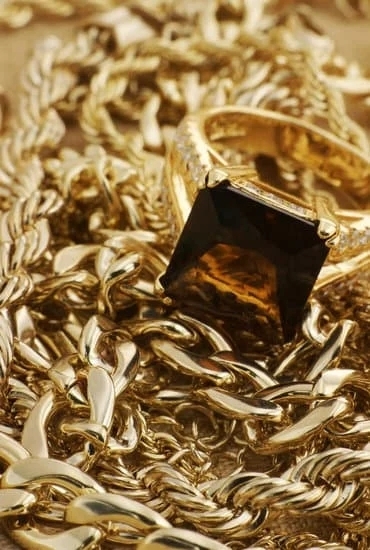The history of American slave jewelry is a fascinating and often overlooked aspect of the experience of enslaved Africans in the United States. From its origins in African traditions to its evolution and impact after emancipation, American slave jewelry provides valuable insight into the lives and resistance of enslaved individuals. This article will explore the origins, materials, symbolism, role in resistance, economic impact, evolution after emancipation, and contemporary perspectives on American slave jewelry.
The origins of American slave jewelry can be traced back to the influence of African traditions brought by enslaved individuals to the United States. The materials used in American slave jewelry reflect resourcefulness and creativity in the face of oppression.
Symbolism and meaning behind these pieces provide a lens through which we can understand the experiences and community bonds forged among slaves. Furthermore, the use of jewelry as a form of resistance and communication demonstrates the resilience and agency of enslaved individuals within oppressive systems.
This article aims to shed light on this often overlooked aspect of history, examining both its cultural significance and broader impact on society. By exploring the legacy of American slave jewelry, we can gain a deeper understanding of the enduring strength and resilience of those who endured such hardship.
Origins of American Slave Jewelry
The origins of American slave jewelry can be traced back to the influence of African culture and traditions. The practice of adorning oneself with jewelry has been deeply ingrained in African society for centuries, and this tradition was brought to the United States through the transatlantic slave trade. As enslaved Africans were forcibly brought to America, they carried with them their rich cultural heritage, including their knowledge of metalwork, beadmaking, and other jewelry-making techniques.
In Africa, jewelry served a variety of purposes beyond mere adornment. It could signify wealth, social status, tribal affiliation, and even protection from negative forces. Similarly, when enslaved Africans arrived in America, they continued the tradition of creating and wearing jewelry as a means of self-expression and communication within their own communities.
The materials used in American slave jewelry were often limited by the harsh conditions of slavery. Enslaved individuals typically utilized whatever resources were available to them – such as shells, bone, glass beads, or rudimentary metalwork – to craft their own pieces of jewelry.
Despite the hardships they faced, these individuals demonstrated remarkable creativity and resourcefulness in producing objects that held deep cultural significance. The incorporation of these materials into their jewelry also reflected a blend of African traditions with elements from Native American and European cultures that they encountered in America.
Materials Used in American Slave Jewelry
American slave jewelry was often made from a variety of materials, many of which were locally sourced or repurposed from everyday objects. The limited resources available to enslaved individuals meant that they had to be creative in their use of materials, resulting in unique and resourceful pieces of jewelry.
Some of the most common materials used in American slave jewelry included:
- Seeds and nuts: Enslaved individuals would often use seeds and nuts such as acorns, coconuts, and various types of beans to create intricate beadwork for necklaces, bracelets, and headdresses.
- Animal bones: Bones from animals such as cattle, deer, and pigs were frequently carved and shaped into pendants or beads for use in jewelry.
- Clay: Enslaved individuals would mold and fire clay into beads and pendants, often adorning them with intricate designs or patterns before firing them in homemade kilns.
These materials not only reflected the ingenuity and resourcefulness of the enslaved individuals who crafted them but also held cultural significance. For example, certain seeds or nuts may have held symbolic value within African spiritual traditions brought over during the transatlantic slave trade.
Despite the scarcity of resources faced by enslaved individuals, their ability to transform humble materials into beautiful and meaningful pieces of jewelry serves as a testament to their resilience and creativity in the face of adversity. The history of American slave jewelry is a powerful reminder of the enduring legacy of those who were forced into bondage.
Symbolism and Meaning Behind American Slave Jewelry
American slave jewelry holds deep symbolic and cultural meaning, reflecting the experiences and struggles of enslaved African Americans. These pieces were not only ornamental but also served as a form of resistance, communication, and identity. The symbolism behind American slave jewelry is rich and multifaceted, encompassing various elements such as materials used, designs, and individual adornment.
One of the most prominent symbols in American slave jewelry is the use of materials such as cowrie shells, glass beads, and metals like brass and copper. These materials were significant in African culture and were often incorporated into jewelry worn by enslaved individuals as a way to maintain connections to their African heritage. Cowrie shells, for example, were traditionally used in Africa as a form of currency and were believed to have spiritual significance, symbolizing wealth, fertility, and protection.
The designs of American slave jewelry also conveyed important messages. For instance, certain pieces like necklaces or bracelets adorned with specific charms or beads could indicate the wearer’s skills or trade within the plantation community. Additionally, jewelry was sometimes used to express religious beliefs or convey secret messages related to escape or resistance. As such, these pieces became a means of silent communication among enslaved individuals.
Furthermore, individual adornment with jewelry held personal significance for enslaved people. Despite their circumstances, wearing jewelry allowed them to assert some agency over their appearance and express their identity. This act of self-expression through adornment was a way for enslaved individuals to reaffirm their humanity in a dehumanizing environment.
| Symbolism in American Slave Jewelry | Cultural Significance |
|---|---|
| Materials such as cowrie shells | Connection to African heritage and spirituality |
| Designs conveying specific messages | Silent communication and expression of individuality |
| Personal adornment with jewelry | Asserting agency and identity within enslavement |
The Role of American Slave Jewelry in Resistance and Communication
American Slave Jewelry played a significant role in resistance and communication during the period of slavery in America. Enslaved individuals utilized jewelry as a means of expressing their identity, communicating with one another, and resisting their oppressive conditions. The use of jewelry as a form of resistance was a way for enslaved people to assert their autonomy and individuality while enduring the dehumanizing effects of slavery.
During this period, American slave jewelry served as more than just adornment; it was often used to communicate messages or as a form of protection and empowerment. Enslaved individuals crafted intricate pieces using various materials such as shells, beads, and other found objects to create unique and meaningful jewelry that transcended the limitations imposed on them. Through the creation and wearing of these pieces, they were able to express their cultural heritage, spirituality, and solidarity with one another.
The widespread use of American slave jewelry as a form of resistance did not go unnoticed by enslavers, who recognized its significance in conveying messages and fostering connections among the enslaved population. Jewelry became an important tool for communication within the community, allowing individuals to convey messages about escape plans, safe routes, or potential dangers. The symbolic nature of these adornments also provided comfort and hope amidst the harsh reality of bondage.
Economic Impact of American Slave Jewelry
American slave jewelry not only had cultural and symbolic significance, but it also played a crucial role in the economic landscape of the time. The production and trade of these adornments were an essential source of income for both enslaved individuals and their owners.
Enslaved people often used their skills in crafting jewelry to generate income or trade for goods and services. Additionally, jewelry making provided a sense of financial independence and autonomy, allowing some enslaved individuals to save money with the intention of eventually purchasing their freedom.
The economic impact of American slave jewelry extended beyond just the people directly involved in its production. Slave owners also benefited from the trade of these adornments, as they could sell them locally or through international markets for profit. The value placed on certain pieces of slave jewelry also contributed to the overall wealth and status of slaveholders, further entrenching the economic ties to the institution of slavery.
Furthermore, American slave jewelry became a form of currency among enslaved communities, allowing for transactions and exchanges to take place within a system where traditional forms of payment were restricted or non-existent. This economic aspect had significant implications for the broader system of slavery, demonstrating how material culture was deeply intertwined with the economic foundations that upheld this institution.
Overall, examining the economic impact of American slave jewelry sheds light on the complex web of financial relationships that sustained the practice of slavery. It underscores how even seemingly small aspects of material culture held deep significance in shaping the economic dynamics of this historical period.
Evolution of American Slave Jewelry After Emancipation
After emancipation, the evolution of American slave jewelry took on a new significance as newly freed individuals were able to express themselves more openly through their adornments. The shift from forced labor to newfound freedom was reflected in the styles and materials used in jewelry-making. This period marked a significant departure from the restrictive and often symbolic nature of slave jewelry, as individuals began to embrace their cultural heritage and create pieces that celebrated their newfound liberation.
Embracing Cultural Heritage
With the newfound freedom after emancipation, formerly enslaved individuals began to embrace their African cultural heritage more openly. This was reflected in the use of traditional African symbols and materials in jewelry-making, such as cowrie shells, beads, and intricate metalwork. These pieces became a way for individuals to celebrate their identity and connect with their roots after years of forced assimilation.
Innovations in Jewelry Design
The post-emancipation era also saw innovations in jewelry design among African American communities. Freed individuals were able to experiment with new styles and techniques, leading to the creation of unique and distinct forms of adornment. This period marked the beginning of a renaissance in African American artistry, with jewelry becoming an important medium for self-expression and creativity.
Social and Economic Impact
The evolution of American slave jewelry after emancipation had a significant impact on social and economic dynamics within African American communities. Artisans were able to establish themselves as makers of fine jewelry, creating economic opportunities for themselves and their communities. Jewelry-making became a way for individuals to support themselves financially while also preserving and celebrating their cultural heritage.
As the country moved further away from the era of slavery, American slave jewelry continued to play a vital role in shaping the cultural identity of African Americans, paving the way for contemporary perspectives on preservation and ethical considerations surrounding this rich historical tradition.
Contemporary Perspectives on American Slave Jewelry
Recently, there has been an increased focus on preserving and understanding the history of American slave jewelry. Museums, historical societies, and academic institutions have begun to collect, study, and exhibit these artifacts in order to shed light on this often overlooked aspect of American history. The preservation of these pieces serves as a tangible link to the past, allowing for a better understanding of the experiences of enslaved individuals.
Preservation Efforts
Efforts to preserve American slave jewelry involve not only the physical conservation of the artifacts themselves but also documenting their histories and contexts. Conservationists work to ensure that these pieces are properly cared for and displayed in a way that respects their cultural significance. Additionally, there is a push to document the stories behind the jewelry – who owned them, how they were acquired or passed down through generations, and what they might have meant to their original wearers.
Ethical Considerations
When it comes to displaying and discussing American slave jewelry, ethical considerations come into play. It is crucial that these artifacts are presented in a respectful manner that honors the experiences of enslaved individuals.
There is also a need for ongoing dialogue about who has the authority to collect and tell these stories – ensuring that those directly descended from enslaved individuals have a voice in how this history is presented. Furthermore, museums and institutions must be mindful of how they acquire these artifacts, considering questions of provenance and ownership.
Conclusion
In conclusion, the history of American slave jewelry is a significant and often overlooked aspect of the legacy of slavery in the United States. The origins of American slave jewelry can be traced back to the African influence, with its materials, symbolism, and meaning deeply rooted in African culture. The use of materials such as bone, shells, and beads not only reflects the creativity and resourcefulness of enslaved Africans but also serves as a reminder of their cultural heritage.
Furthermore, American slave jewelry played a crucial role in resistance and communication among enslaved individuals. Symbols and motifs used in the jewelry were often imbued with hidden meanings and messages, allowing for covert communication and acts of rebellion. The economic impact of American slave jewelry cannot be understated either, as it provided enslaved individuals with an opportunity for autonomy and economic independence within the constraints of slavery.
Even after emancipation, the evolution of American slave jewelry continued to reflect the resilience and strength of formerly enslaved individuals. It has left an indelible mark on contemporary perspectives, prompting conversations about preservation and ethical considerations. Recognizing the history of American slave jewelry is essential in understanding the impact that slavery has had on American society and culture. It is a testament to the enduring legacy of those who endured unimaginable hardships yet demonstrated unwavering creativity, ingenuity, and fortitude.
Frequently Asked Questions
Why Do They Call Them Slave Bracelets?
The term “slave bracelets” is used to describe a type of jewelry that consists of a bracelet connected to one or more rings. The name “slave bracelet” has been met with criticism due to its association with historical slavery.
What Is the History of Slave Bangles?
The history of slave bangles dates back to ancient civilizations, where slaves were often adorned with metal bands around their wrists and ankles as a symbol of ownership. Over time, this practice evolved into the adornment of free individuals with similar jewelry.
What Is a Native American Slave Bracelet?
A Native American slave bracelet is a style of jewelry that incorporates traditional Native American designs into the combination of bracelets and rings. These pieces often feature intricate metalwork and gemstones, reflecting the cultural heritage of Native American artisans.

Welcome to my jewelry blog! My name is Sarah and I am the owner of this blog.
I love making jewelry and sharing my creations with others.
So whether you’re someone who loves wearing jewelry yourself or simply enjoys learning about it, be sure to check out my blog for insightful posts on everything related to this exciting topic!





